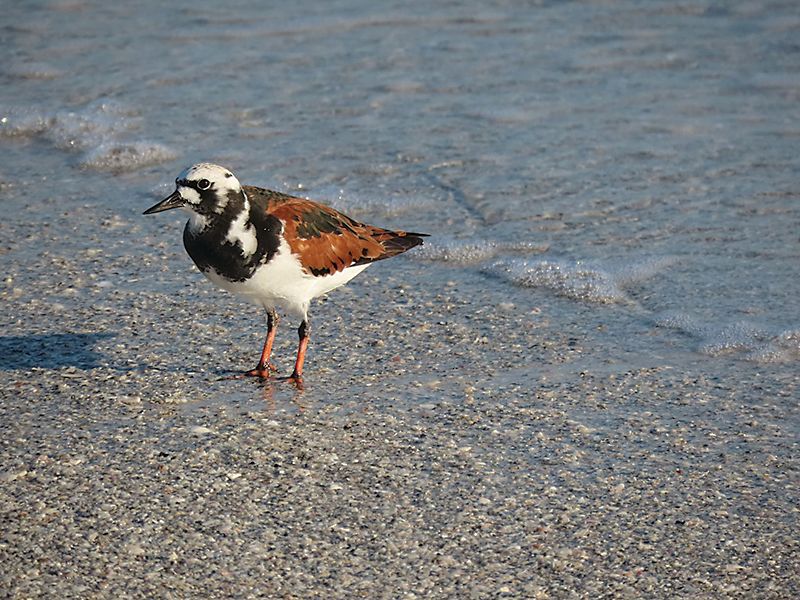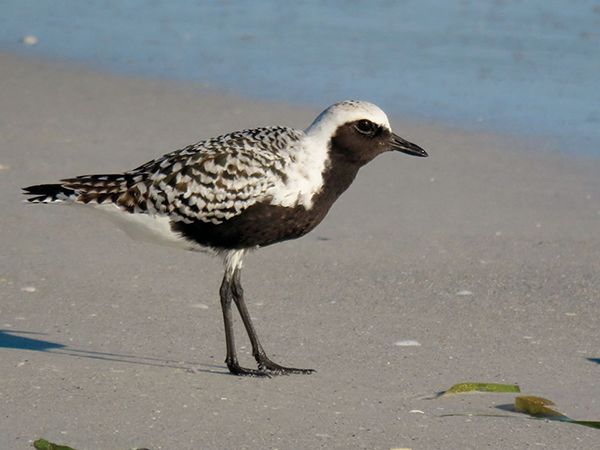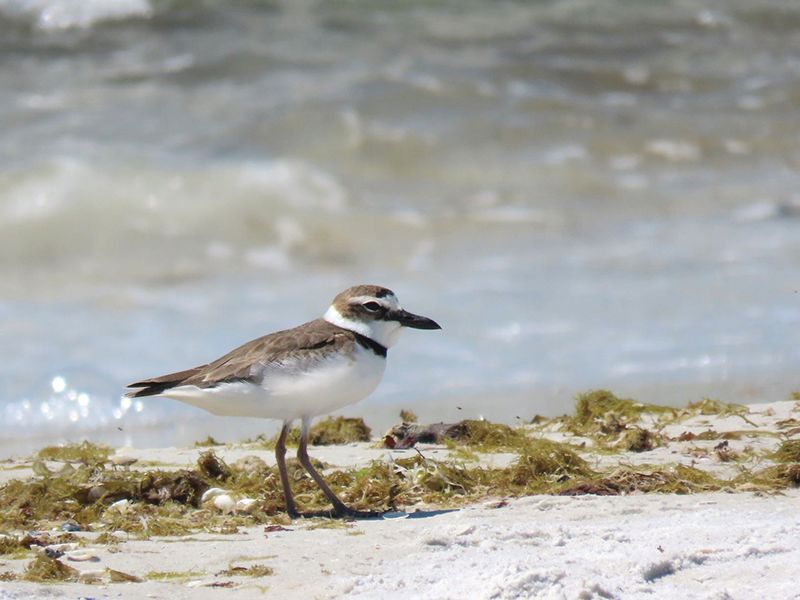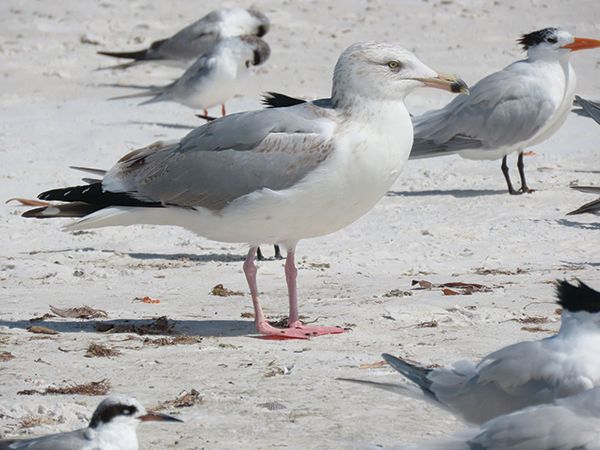13 Birds You'll Spot on Local Beaches
With Kylie Wilson December 1, 2020 Published in the December 2020 issue of Sarasota Magazine

Snowy Plover (Charadrius nivosus)
Status: State-threatened, protected species. In Sarasota year-round. Only an estimated 98 breeding pairs of this small and inconspicuous species live in all of Florida. These pale colored plovers are masters of camouflage, and that is their main defense against predators.
Photography by Courtesy Photo

Ruddy Turnstone (Arenaria interpres)
Migratory species in Sarasota in the non-breeding season (fall-spring). A robust shorebird with a striking red-brown coloring and black bib in breeding plumage, it nests on the high arctic tundra (like sanderlings) and migrates south for the winter. They are called turnstones for their foraging behavior, as they walk about flipping over stones, shells and seaweed looking for food.
Photography by Courtesy Photo

Willet (Tringa semipalmata)
Year-round species in Sarasota. Large and plain but when seen in flight has a bold white wing stripe bordered by black on both sides. There are two subspecies, an eastern and a western. Like many shorebirds, it uses its long bill to probe into the sand along the shoreline in search of food.
Photography by Courtesy Photo

Semipalmated Plover (Charadrius semipalmatus)
Migratory species in Sarasota in the non-breeding season (fall-spring). Similar in size and shape to the snowy plover but a darker brown with yellow legs and black collar. They are a widespread and common species of plover. The term “semipalmated” refers to the toes being partially webbed.
Photography by Courtesy Photo

Black-Bellied Plover (Pluvialis squatarola)
Migratory species in Sarasota in the non-breeding season (fall-spring). Large plover with a black belly in breeding plumage, but it loses that coloration in the non-breeding season. Some young birds may stay in the Sarasota area year-round.
Photography by Courtesy Photo

Short-Billed Dowitcher (Limnodromus griseus)
Migratory species in Sarasota in the non-breeding season (fall-spring). Stocky bodied and long-billed shorebird, its plumage is a blend of browns and it has yellow-green legs. It is easily confused with long-billed dowitchers, which are very similar except they have a slightly larger bill and are more likely found in inland marsh habitats as opposed to coastal sites.
Photography by Courtesy Photo

Wilson’s Plover (Charadrius wilsonia)
Year-round but uncommon in Sarasota, a beach-nesting species and a species of special concern. Slightly larger than snowy plovers and has a thicker, more pronounced bill. Similar to the semipalmated plover, it has a single black neck ring which is darker on males during breeding season (March–August).
Photography by Courtesy Photo

Piping Plover (Charadrius melodus)
Migratory species in Sarasota in the non-breeding season (fall-spring), it is listed as federally endangered. Another beach-nesting bird. Nearly identical to the snowy plover in non-breeding plumage, but it has yellow legs instead of gray. In breeding season it has a bright yellow bill with a black tip, and males have a black collar and forehead.
Photography by Courtesy Photo

Anhinga (Anhinga anhinga)
Year-round resident and local breeder in Sarasota. Anhingas are also diving water birds, but they are more frequently found in freshwater habitats. They also have a long neck and swim to catch fish. Unlike cormorants, anhingas have a sharp, pointed bill that they use to spear their prey.
Photography by Courtesy Photo

Herring Gull (Larus argentatus)
Migratory gull that winters in Sarasota in high numbers. One of the large gull species, and the most common to be found in Sarasota. They are much larger than the laughing gull, and adults can be distinguished by their yellow bill and pink legs.

Royal Tern (Thalasseus maximus)
Year-round resident and local breeder. Largest of the crested tern species and identified by the bright orange bill and all-black crest, or cap, in the breeding season. In the non-breeding season, the black cap recedes and the birds look like they are balding. This species is primarily coastal and is rarely seen inland.

Sandwich Tern (Thalasseus sandvicensis)
Year-round resident and local breeder. Another one of the crested terns, the sandwich tern is slightly smaller than the royal tern and has a long, slender black bill with a yellow tip. Sandwich and royal terns are often seen together in mixed flocks.

Least Tern (Sternula antillarum)
Seasonally in Sarasota during the breeding season (April–August), it is one of the state-threatened beach nesting bird species. The smallest tern species in North America—but don’t let the name fool you, these little birds are fierce. Least terns nest in colonies and are quick to defend their nests and chicks. They will dive-bomb any potential threats, including people who may get too close. They are entirely migratory.
Birds abound on Sarasota beaches; here, Sarasota Audubon Society’s Kylie Wilson spots some shore-loving species.
Interested in birding? Visit sarasotaaudubon.org for more information.